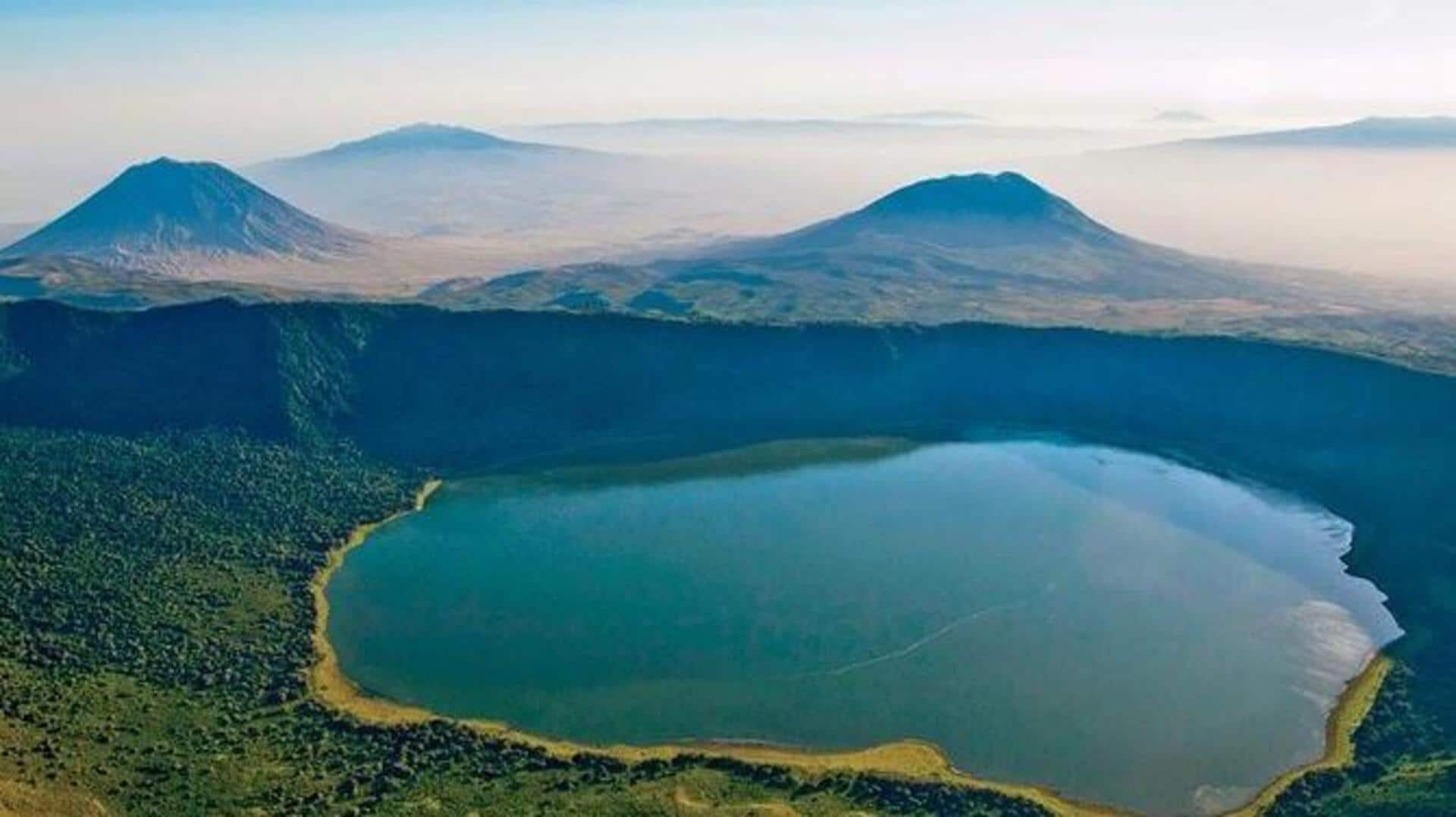
Africa's most amazing volcanic craters: A list
What's the story
Africa is home to some of the most fascinating volcanic craters, offering unique exploration opportunities. These natural wonders provide insights into the Earth's geological history and are a haven for adventure seekers. From hiking trails to breathtaking views, these craters have a lot to offer to those willing to explore them. This article delves into some of the most thrilling volcanic crater explorations in Africa.
#1
Mount Nyiragongo's lava lake
Mount Nyiragongo in the Democratic Republic of Congo is known for its active lava lake. The trek to the summit is arduous but rewarding, giving you a view of one of the world's largest lava lakes. The hike usually takes two days, with an overnight stay at the summit. However, it's important to prepare well with proper gear and guidance from local experts due to unpredictable weather.
#2
Ngorongoro Crater's diverse wildlife
Not just a geological wonder, Tanzania's Ngorongoro Crater is also a wildlife haven. The collapsed volcano is home to some of the most diverse species including elephants, lions, and rhinos in its 260 square kilometer area. Visitors can opt for guided safaris that would bring them face to face with wildlife as they learn about conservation efforts in this UNESCO World Heritage Site.
#3
Erta Ale's fiery landscape
Erta Ale in Ethiopia has been dubbed as one of the most active volcanoes on Earth. Its relentless flow of lava creates an alien landscape, drawing trekkers from all over the world. The journey through desolate land demands stamina and planning because of scorching temperatures and rough trails. The sight of Erta Ale's fiery caldera at night is something you will never forget.
#4
Mount Elgon's unique flora
Mount Elgon on the Uganda-Kenya border boasts one of Africa's largest intact calderas surrounded by lush vegetation and flora species unique to the Earth. Hiking trails range from easy walks through montane forests to more strenuous climbs up peaks such as Wagagai at 4,321 meters above sea level. Proper planning allows you to explore safely amidst changing weather patterns typical of high-altitude regions.